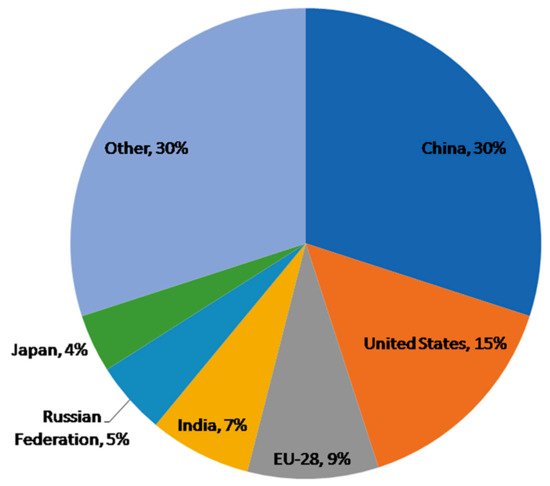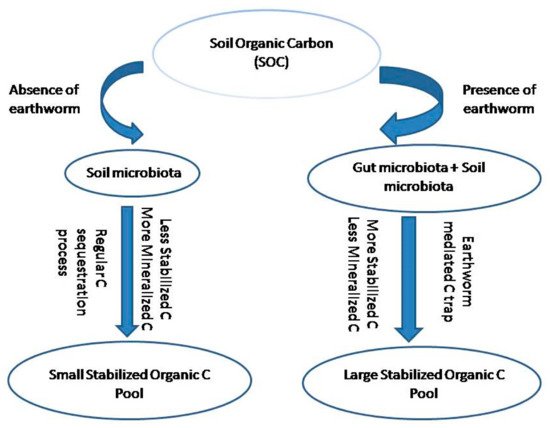Your browser does not fully support modern features. Please upgrade for a smoother experience.
Please note this is a comparison between Version 1 by Rojita Mishra and Version 2 by Rita Xu.
The implementation of cutting-edge agricultural practices provides tools and techniques to drive climate-smart agriculture, reduce carbon emissions, and lower the carbon footprint. The alteration of climate conditions due to human activities poses a serious threat to the global agricultural systems. Greenhouse gas emissions (GHG) from organic waste management need urgent attention to optimize conventional composting strategies for organic wastes.
- vermicomposting
- greenhouse gas emissions
- carbon sequestration
1. Introduction
The changing temperature conditions, precipitation variability, and the incidence of extreme weather events are increasing day by day throughout the world, including the Indian subcontinent [1]. The Paris Climate Conference (COP21) created the goal of limiting the amount of heat-trapping gases, i.e., carbon dioxide (CO2), methane (CH4), nitrous oxide (N2O), and fluorinated gases (F-gases) emitted globally. The largest climatic impacts will be greatest in those regions where agricultural production is vital for securing livelihoods and promoting economic growth [2]. Soil is a major source and sink of greenhouse gases, producing approximately one-fifth of global CO2 emissions [3], roughly one-third of global CH4 emissions, and two-thirds of N2O emissions [4]. The green revolution has increased global food production which indirectly increased the dependence of farmers on synthetic chemical fertilizers, pesticides, and insecticides. The repetitive use of chemical fertilizers causes severe environmental and land degradation. Vermicomposting is an integrated biological process of converting organic waste into vermicast by employing earthworms and naturally occurring microbes under a mesophilic environment. Vermicomposting has been reported as a sustainable technique for the treatment and management of different organic wastes [5]. Earthworms increase the bacterial abundance in the soil as their gut conditions are favorable for the multiplication of bacteria and the suppression of fungi [6].
2. Greenhouse Gas Emissions by Organic Waste Management
Greenhouse gas emission is one of the foremost problems connected with waste management; CO2 is generated under strictly aerobic conditions, whereas CH4 and N2O are produced from the anaerobic mineralization of organic waste [7][23]. The COP21 Paris climate change conference established the desire to reduce GHG in all sectors [8][24]. China had the highest CO2 emissions from agriculture, forestry, and other land use in 2014, followed by the United States, the European Union, India, the Russian Federation, and Japan (Figure 1). Greenhouse gas emissions have many detrimental ecosystem impacts such as the melting of glaciers, rise in sea level, global warming, acidification of the ocean, etc.2.1. Mitigating GHGs Emission during the Vermicomposting of Waste
The mitigation policies to lessen the GHG emission during vermicomposting comprise the following: use of C-rich amendment material such as sawdust [10][28], red mud and fly ash [11][29], inorganic material [12][30], and an aeration system. The selection of a bulking agent is based on locally available agricultural residues such as wood chips [13][31], corn stalks [14][8], and spent mushrooms and cotton gins [15][32]. The role of biochar in mitigating greenhouse gas (GHG) emissions has been documented in many pieces of literature [11][16][29,33]. Greenhouse gas emission during composting and vermicomposting is controlled by various factors such as aeration, the addition of a bulking agent, pH, temperature, and C/N ratio [17][34]. Many studies suggest that the incorporation of sewage sludge and cow dung significantly reduces greenhouse gas emissions [18][35]. Wang et al. found that a reed straw addition to duck dung reduces N2O generation. However, manure cannot be used in vermicomposting as it enhances GHG production [17][34]. Greenhouse gas emission is linked with the carbon content of the waste used. Vermicomposting can be used for reducing the methane emission from the sewage sludge with an additive of pelletized wheat straw [19][36]. There are reports that worm composting reduces CH4 emissions in comparison to controlled conditions due to the aerobic environment maintained in the pile by the earthworms. The increased aeration period and suitable maintenance reduce CH4 emissions during the vermicomposting process. Moisture is also an important factor that regulates greenhouse gas emissions during vermicomposting. Excess moisture in worm composting bins causes the death of worms, increases N2O emission by enhancing the process of nitrification and denitrification, and induces CH4 emissions by supporting the growth of methanogenic bacteria in vermibeds. The center of the anoxic earthworm gut contains the highest concentration of N2O [20][21][37,38]. An increase in the radius of the earthworm might increase the probability that the N2O is further reduced to N2 before it leaves the alimentary canal [22][39]. There are reports that gut passage time and competing redox processes may be important factors for the in vivo emission of N2O and N2 by earthworms [23][40]. The passage through the earthworm gut accelerates the decomposition of organic matter due to mineralization, fragmentation, and the consequent increase in microbial activity (Figure 2) thus, higher C storage occurs with the physical protection of soil organic matter inside cast aggregates [24][41]. The feeding ratio is also an important parameter for the determination of GHG emissions during vermicomposting.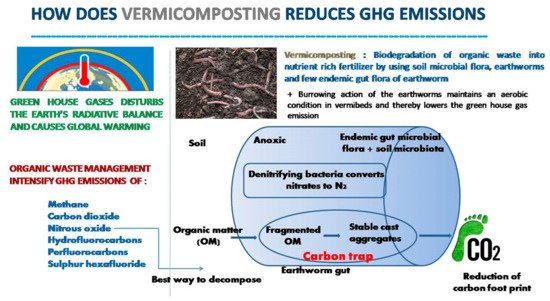
Figure 2. Vermicomposting in climate-smart agriculture.
2.2. Effect of Feeding Ratio on Greenhouse Gas Emission (GHG)
The feeding ratio is the ratio of substrate added over earthworm biomass [25][43]. The optimum feeding ratio helps in decreasing GHGE by 23–48% as compared to non-earthworm-treated composting. A low amount of GHGE during vermicomposting is because of many factors such as (i) earthworms help to increase aeration due to the continuous turning of the substrates [26][27][11,16] and (ii) stabilization of the substrate after passing through the gut of the earthworm [28][44]. In case of a high feeding ratio, the conditions are reversed and GHGE increases. The findings for GHGE during vermicomposting are contradictory; for example, [29][30][15,45] had a different view than that of [14][26][27][8,11,16]. This difference in result can be well explained in terms of the feeding and burrowing behavior of earthworms [30][45], carbon quality and nitrogen content [27][28][16,44], temperature, and scale of the experiment [26][28][11,44]. The denitrification process that takes place inside the earthworm gut is the main physiological process for N2O emission in anecic earthworms [30][45]. A high feeding ratio decreases the conversion rate of fresh materials into vermicompost. Previous studies revealed that more food supply decreases the biomass and reproduction of earthworms [28][44]. However, a low feeding ratio increases the mineralization of nitrogen compared with a high feeding ratio [25][43].2.3. Role of Earthworms in Soil Carbon Sequestration
Carbon sequestration is a process to fix and store atmospheric carbon dioxide and results in the mitigation of global warming. Soil organic matter (SOM) is formed due to litter decomposition and plays an indispensable role in soil carbon (C) sequestration [22][39]. In the comparison of systems without earthworms and with earthworms, a sequence of events takes place that actually deals with carbon cycling and carbon sequestration. From Figure 3 and Figure 4 it is well understood that the earthworms decrease the potentially mineralizable carbon and increase the readily mineralizable carbon and stabilized carbon. A study reported that earthworms increased the carbon mineralization in straw by employing C13 labeling [31][46] and creates a priming effect by inducing organic matter mineralization [32][47]. There is a report that soil organic C stock and carbon sequestration increased to a small extent due to the addition of vermicompost at a 5 t ha−1 rate [33][48]. This little augmentation in the soil organic C stock may generate large impacts in reducing the concentration of atmospheric C. The presence of earthworms adds vermicast to soil and enhances the soil’s physicochemical and biological properties which favor the growth of plant roots in the deeper layer of soil and gather more C in the soil [33][48]. The increase in organic C in soil maintains a sustainable agriculture system and behaves as a potent sink of atmospheric CO2 [34][49].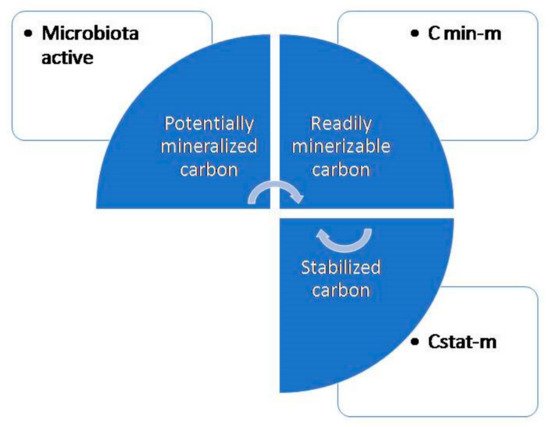
Figure 3. Carbon sequestration in a system without earthworms.
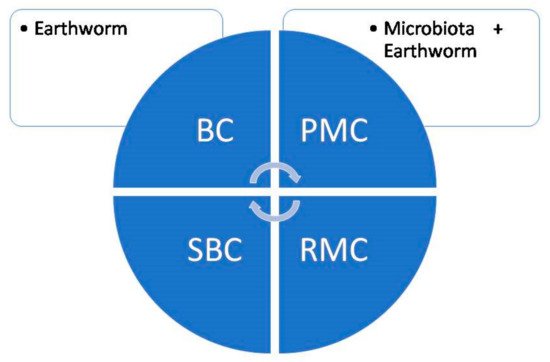
Figure 4. Carbon sequestration in a system with earthworms; BC: basal activated carbon; PMC: potentially mineralizable carbon; SBC: stabilized carbon; and RMC: readily mineralizable carbon.

